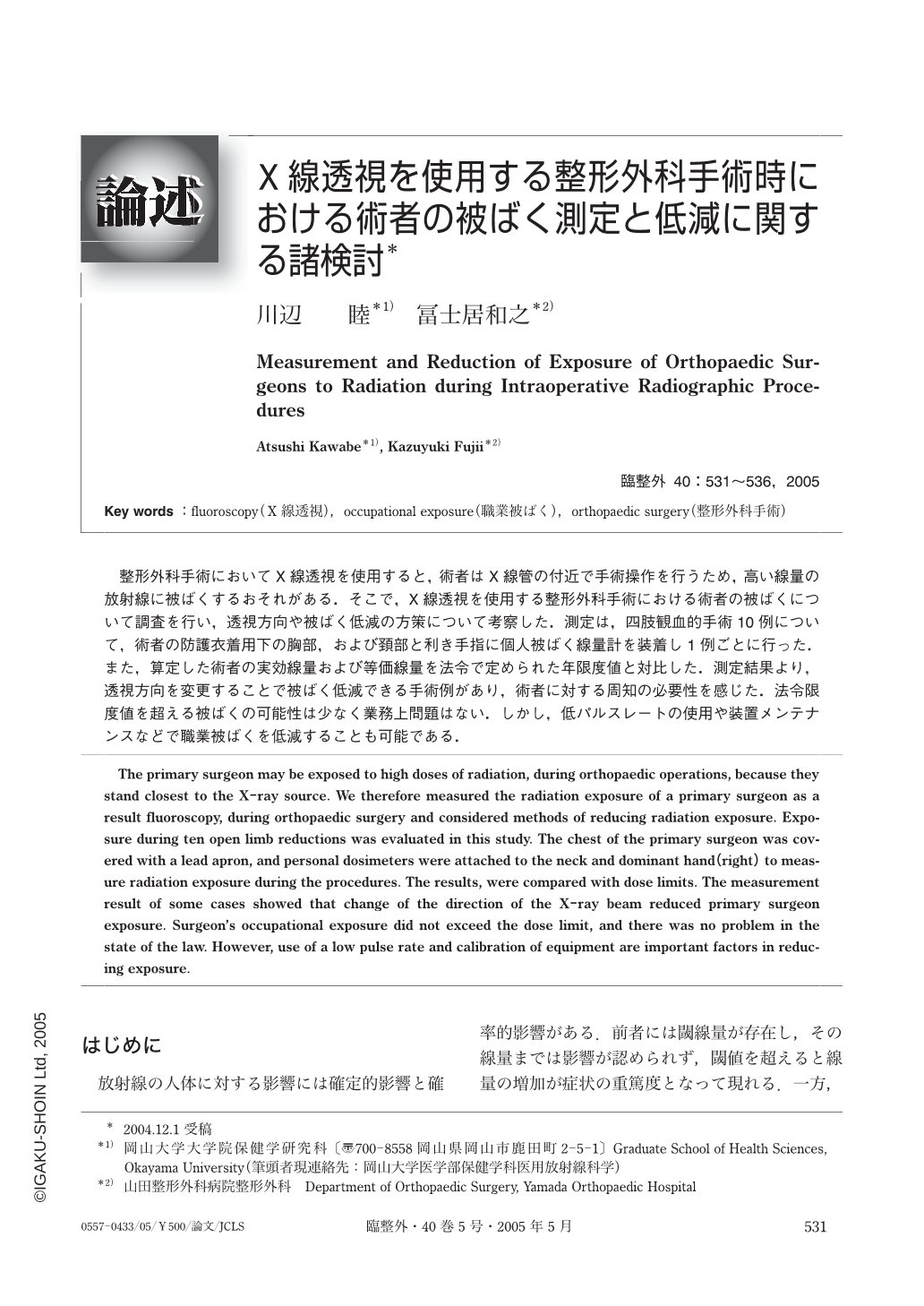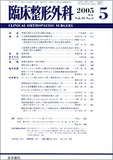Japanese
English
- 有料閲覧
- Abstract 文献概要
- 1ページ目 Look Inside
整形外科手術においてX線透視を使用すると,術者はX線管の付近で手術操作を行うため,高い線量の放射線に被ばくするおそれがある.そこで,X線透視を使用する整形外科手術における術者の被ばくについて調査を行い,透視方向や被ばく低減の方策について考察した.測定は,四肢観血的手術10例について,術者の防護衣着用下の胸部,および頚部と利き手指に個人被ばく線量計を装着し1例ごとに行った.また,算定した術者の実効線量および等価線量を法令で定められた年限度値と対比した.測定結果より,透視方向を変更することで被ばく低減できる手術例があり,術者に対する周知の必要性を感じた.法令限度値を超える被ばくの可能性は少なく業務上問題はない.しかし,低パルスレートの使用や装置メンテナンスなどで職業被ばくを低減することも可能である.
The primary surgeon may be exposed to high doses of radiation, during orthopaedic operations, because they stand closest to the X-ray source. We therefore measured the radiation exposure of a primary surgeon as a result fluoroscopy, during orthopaedic surgery and considered methods of reducing radiation exposure. Exposure during ten open limb reductions was evaluated in this study. The chest of the primary surgeon was covered with a lead apron, and personal dosimeters were attached to the neck and dominant hand (right) to measure radiation exposure during the procedures. The results, were compared with dose limits. The measurement result of some cases showed that change of the direction of the X-ray beam reduced primary surgeon exposure. Surgeon's occupational exposure did not exceed the dose limit, and there was no problem in the state of the law. However, use of a low pulse rate and calibration of equipment are important factors in reducing exposure.

Copyright © 2005, Igaku-Shoin Ltd. All rights reserved.


